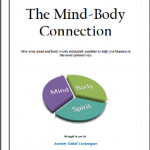An anxiety attack is a triggered or un-triggered overreaction to a situation at hand. Sounds simple right? It’s actually a very complex issue with a variety of symptoms and triggers. These attacks can come on without a single warning and incapacitate the sufferer. Simple things like riding in an elevator or just the thought of giving an oral presentation can trigger symptoms of anxiety, and for some, these symptoms are severe and can spill over into their personal lives affecting their activities of daily living, families and relationships. The key is making yourself aware of the symptoms associated with anxiety attacks and useful methods in controlling them.
All anxiety attacks are different for every person. Some may experience a single symptom, while others may have a long list associated with their events. Increased heart rate, hot flashes and chills are just a few. A panic attack sufferer might also experience a deep feeling of loss of control, a fear of dying, overwhelming panic and a sense of detachment. More physical symptoms could include nausea, dizziness, sweating, clammy palms or a choking sensation. These alone or combined are terrifying and it’s of grave importance to arm yourself with calming and handling techniques for these attacks.
The peak time for an anxiety attack is typically 10 minutes and rarely last for more than 30 minutes. But this short period of time though, the patient can totally lose control of his/her actions, thoughts and feelings. Below are some handling techniques that may sooth the terror associated with anxiety attacks:
Relaxation: Though it seems impossible to the sufferer, creating a calm, relaxing environment will ease the tension. Slow, deep breathing calms the mind and relaxes the body. Staying focused on breathing not only takes the mind off the reason for panic, it allows the body time to gain control of the other symptoms. Practicing deep breathing exercises even when not in the middle of an anxiety attack is a useful tool.
Think Positive: Again, this isn’t the easiest thing to accomplish. This overwhelming fear has taken control, but you have to get that control back. Push those positive thoughts to the front of your mind. Focusing on the dread and embarrassment of the situation at hand is only going to further exacerbate the attack.
It’s Going to Be Over Soon: Keep your mind aware that this attack will be over soon, and the sooner you can get control of your thoughts, the sooner the attack will end. Don’t count the seconds and minutes as they pass. Just focus on breathing and positive thoughts, and know with confidence that this too shall pass.
Exercise: Treating your body to routine exercise is beneficial. This helps with body, brain and mind functionality. You feel stronger and more capable of handling any situation. A routine exercise regimen is also a great stress reliever.
Talk It Out: Voice your fears and anxiety issues with someone you trust; friend, spouse, church affiliate or even a therapist. Often, an open ear can help you work through the possible triggers and get to the bottom of the anxiety attacks.
Understanding how and why an anxiety attack occurs are crucial. After this discovery, treatment options are in abundance.
Affiliate Disclosure
My website contains affiliate links, which means if you purchase any products mentioned in my articles, I may receive a commission. If you do, thank you!






Speak Your Mind